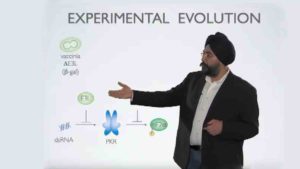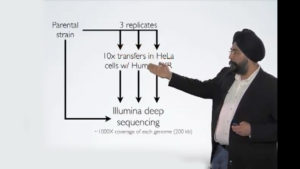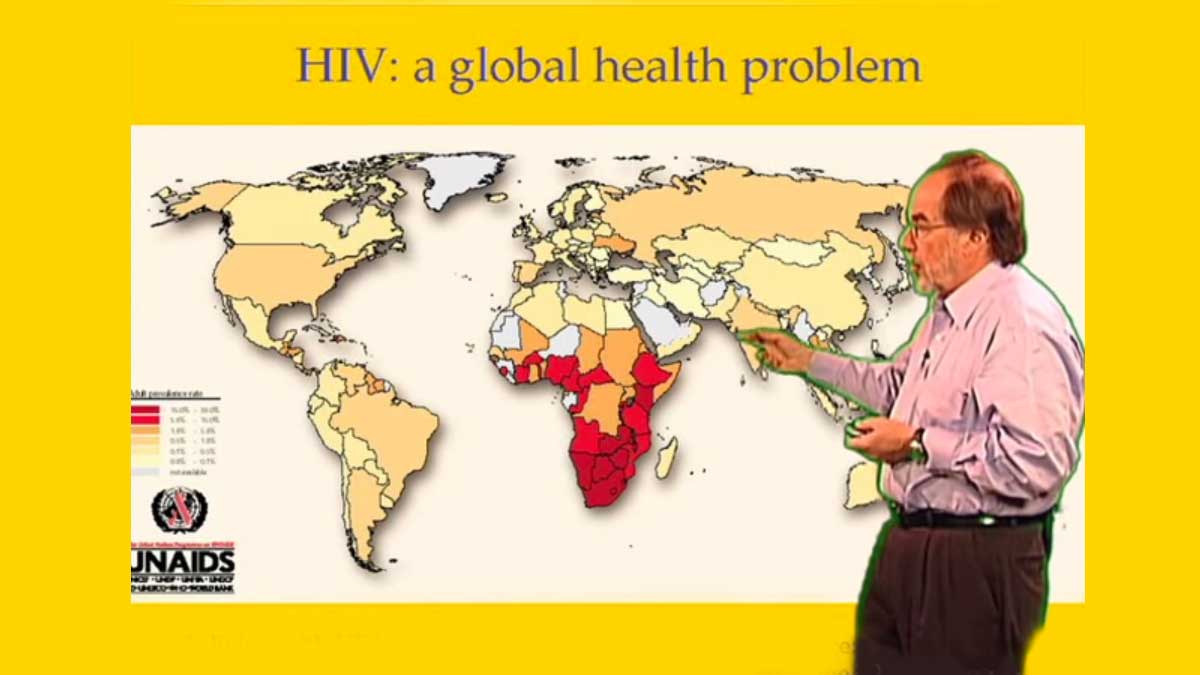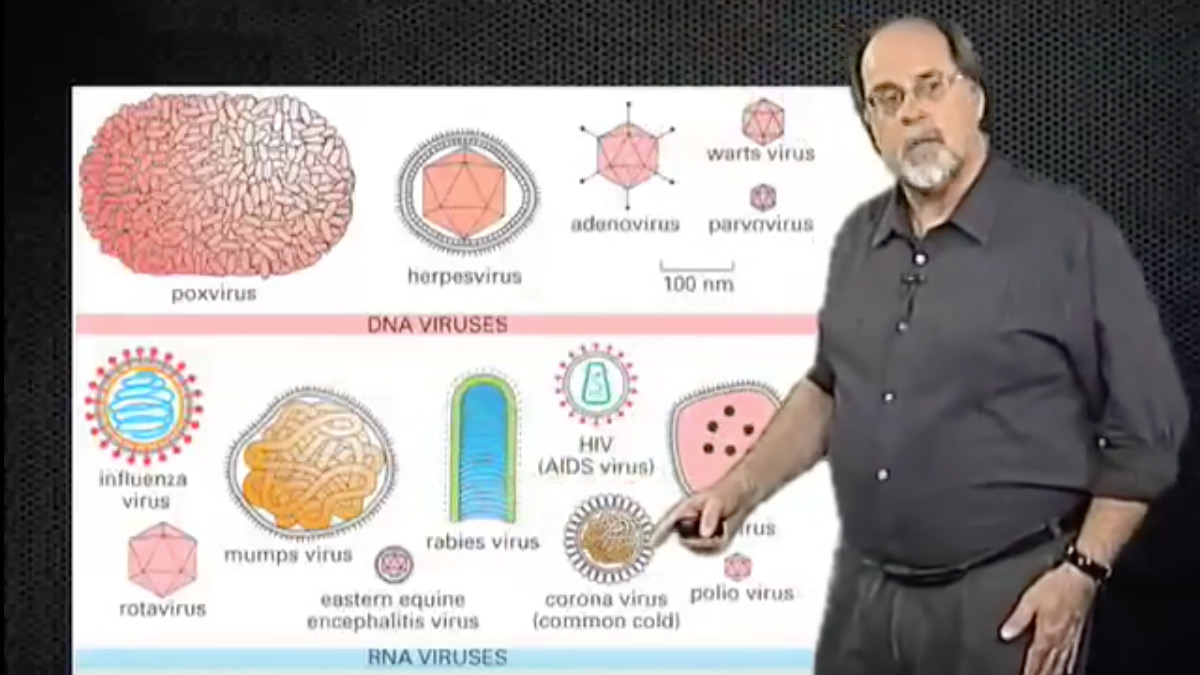Talk Overview
Malik explains that viruses and their human hosts are constantly undergoing an evolutionary arms race. In this high-stakes battle, one party is always losing and thus there is always pressure on the “loser” to innovate. Through cycles of adaptation, the “winner” and “loser” are continually switched. A comparison of human, rhesus macaque and chimpanzee genomes shows that most primate genes have undergone very few changes over time. However, there are a few genes that have undergone many more changes indicating that mutation in these genes may be advantageous. Interestingly, many of these genes are involved in immunity.
In Part 1 of his talk, Malik discusses how primate proteins have evolved to combat viral evolution and specifically viral proteins that mimic host proteins. Malik focuses on the strategy used by the human PKR gene to battle the pox viral protein K3L, a protein that effectively mimics the human protein eIF2a.
In Part 2, Malik switches his focus to adaptation in the virus. K3L is the viral protein targeted by the primate PKR. Just as PKR has rapidly changed in primate genomes, K3L has rapidly changed in the viral genome. Malik and colleagues designed an assay that allowed them to follow the rapid evolution of K3L. They found that the virus adapted by both mutating a single amino acid and by undergoing a series of duplications of the K3L gene. This rapid genomic amplification may be another way by which viruses adapt to a changing host immune system.
Speaker Bio
Harmit Malik

Harmit Malik received his undergraduate degree in chemical engineering from the Indian Institute of Technology, Bombay and his PhD from the University of Rochester. He moved to the Fred Hutchinson Cancer Research Center in Seattle for post-doctoral work and decided to stay, starting his own lab in the Division of Basic Sciences in 2003. Malik… Continue Reading











Leave a Reply